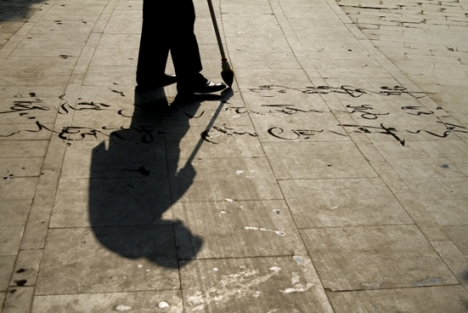
All across China, one finds elderly men practicing calligraphy in this way. In parks, on sidewalks in big cities and small towns, men armed with a bucket and a long brush incessantly trace out words from times long past. Old poems, classical tales, and bits of history they learned as young boys or men – words flowing out of their brushes and fading almost as quickly as they were born again.
They say they do this to keep their minds sharp and hands strong. I have been contemplating the spiritual or cathartic value of producing such transient and beautiful art with personal subjects. It could be so liberating! Because it is a public expression, sharing and communicating the experience stops it from being bottled up inside. As the words fade, so do one’s attachment to the events or people that formed the basis of your composition. Calligraphy therapy.
At this time of year when we often contemplate our lives and make adjustments to try to live better or healthier, be kinder, more patient, less greedy etc., I thought that this image and concept would be useful. Nothing to do with food, but a cultural insight from my last trip. (Words by Laura Kelley; Photo of Old Man Practicing Calligraphy by Chen Po Chuan @ Dreamstime.com).
